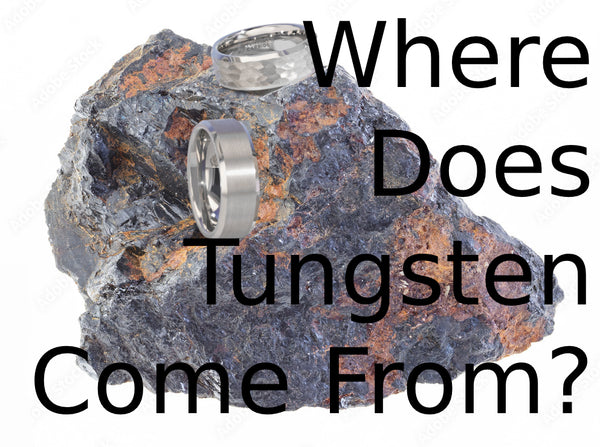MOTHER'S DAY SALE! Up To 50% OFF & 15% OFF Code: MOM15 + Free Shipping |Track My Order
Top Tungsten Mining Countries

Deep within the Earth's crust lies a hidden treasure – tungsten, a rare and valuable metal with a wide range of industrial applications. As one of the densest elements on the periodic table, tungsten boasts exceptional strength, durability, and heat resistance, making it an indispensable component in various industries. Join us on a journey beneath the surface as we uncover the fascinating world of tungsten deposits and the intricate process of mining this coveted resource.
The Geology of Tungsten
Tungsten, with its chemical symbol W, is found in nature primarily in the form of tungstates, such as scheelite and wolframite. These tungsten ores typically occur in association with other minerals, including quartz, mica, and sulfides, within igneous and metamorphic rock formations. The geological processes responsible for the formation of tungsten deposits involve complex interactions of heat, pressure, and mineral-rich fluids over millions of years.
Types of Tungsten Deposits
Tungsten deposits are classified into several types based on their geological setting and mineralogy. Primary tungsten deposits are formed through magmatic processes, where molten rock containing tungsten-rich minerals solidifies and crystallizes within the Earth's crust. Secondary tungsten deposits, on the other hand, are formed through weathering and erosion of primary deposits, leading to the concentration of tungsten minerals in placer deposits or veins.
Exploration and Discovery
The exploration for tungsten deposits begins with geological mapping, remote sensing, and geophysical surveys to identify potential ore-bearing formations. Once promising targets are identified, exploratory drilling is conducted to extract core samples for laboratory analysis. Geochemical and mineralogical studies help assess the tungsten content and distribution within the rock formations, guiding further exploration efforts.
Mining and Extraction
Tungsten mining involves a combination of surface and underground mining methods, depending on the depth and accessibility of the deposits. Open-pit mining is commonly used for shallow deposits, where large quantities of ore can be extracted using heavy machinery and explosives. For deeper deposits, underground mining techniques such as shaft sinking and drift mining are employed to access the ore veins safely.
Processing and Refining
After extraction, the tungsten-bearing ore undergoes a series of processing steps to concentrate the valuable mineral and remove impurities. This typically involves crushing, grinding, and gravity separation to separate the tungsten minerals from the gangue minerals. Chemical flotation and hydrometallurgical methods may also be employed to further refine the tungsten concentrate into high-purity tungsten oxide or metal powder.
Where is it Found?
Tungsten is found in ores such as scheelite and wolframite. These ores are found around the world but the country that accounts for the most tungsten concentrate production is China, supplying about 83% of the tungsten concentrate produced globally and 62% of tungsten reserves according to Jennings Capital. Because of how low the prices of tungsten were after China's production of the element flooded the market in the 1990s, most western mines that mined ores that could be used to produce tungsten ended up closing. Following China, the country that produces the most tungsten is Canada, with the North American Tungsten Corps. Ltd.'s Cantung mine being the most significant producer of the element in terms of volume following China. Interestingly, tungsten consumption is highest in China and the United States, even though there are no producing tungsten mines in the United States.
Other countries that produce enough tungsten to be worth mentioning include Russia, who was the second largest producer of tungsten prior to the discovery of the Dakota Zone at Cantung, and Japan. According to a market overview put together by Ormonde Mining PLC in 2010, China pretty much dominates the market production of the mineral at about 77% of world mine production, with Russia coming in at 5%, North America, Europe and Japan coming in at a combined 8%, and the rest of the world combined at 10%.
In Conclusion
So there you have it! Almost all tungsten comes from China, with only small percentages of tungsten mining and production being done in other parts of the world. Explore our exquisite collection of Tungsten Rings today!
